Have you ever wondered why so many adults still clutch their favorite stuffed animal at night, despite society often labeling it as “childish”? Sleeping with a stuffed animal isn’t just a habit for kids — it’s a source of comfort, emotional support, and even stress relief for people of all ages. In fact, research and cultural trends show that this simple act can be profoundly beneficial, regardless of your age.
Summary: Sleeping with a stuffed animal is not childish; it provides emotional comfort, reduces anxiety, and improves sleep quality for people across all age groups. This habit supports mental health and well-being in both children and adults alike.
Imagine Sarah, a busy marketing executive in her 30s, who finds solace in hugging her plush bunny after a hectic day. Far from childish, this nightly ritual helps her calm down and sleep better, proving that stuffed animals are much more than just toys — they are trusted companions for many adults worldwide. Let’s explore why this is the case and what it means across different ages and cultures.
1. Why do people of all ages sleep with stuffed animals?
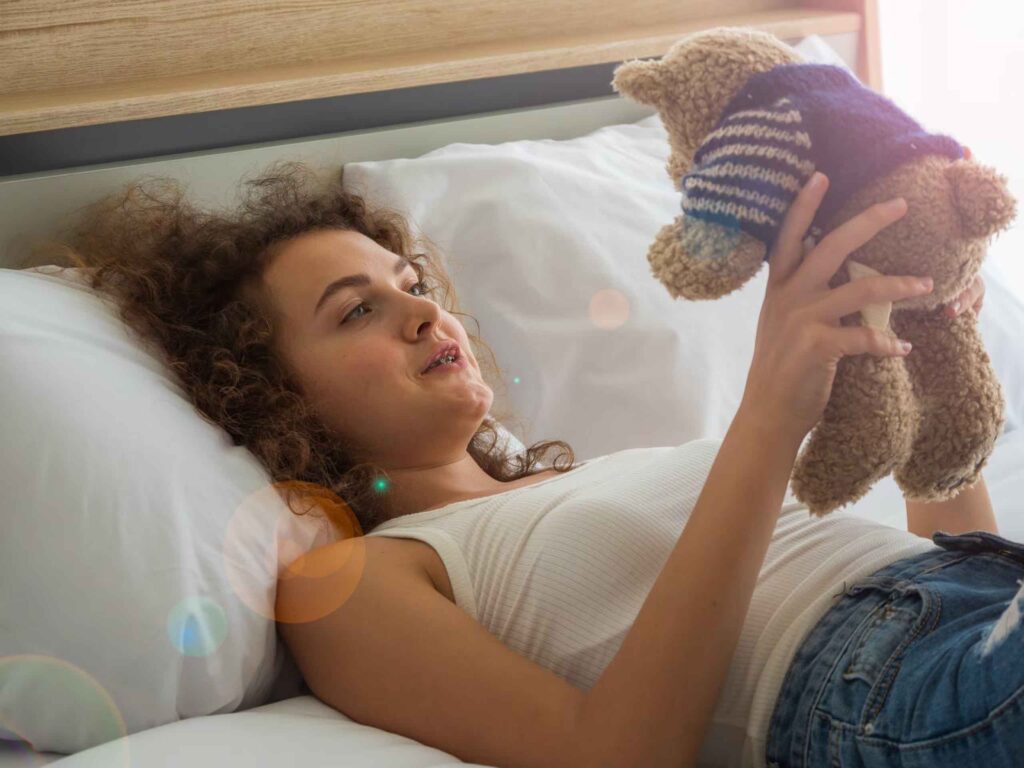
Sleeping with stuffed animals offers a unique source of comfort and emotional security that transcends age. Many people, from toddlers to seniors, use plush toys to feel safe, reduce stress, and foster a sense of companionship.
People sleep with stuffed animals for emotional comfort, security, and stress relief, benefiting mental well-being regardless of their age.
Why All Ages Find Comfort in Stuffed Animals
- Emotional Attachment and Nostalgia: Plush toys often carry sentimental value, connecting individuals to cherished memories or loved ones. For example, adults may keep a childhood teddy bear as a tangible link to their past.
- Stress and Anxiety Reduction: Hugging or holding a stuffed animal can trigger the release of oxytocin, a hormone that promotes calmness and reduces feelings of anxiety. This explains why people of all ages reach for plush toys during stressful times.
- Physical Comfort and Sleep Aid: Soft textures and the feeling of hugging a plush toy can simulate the sensation of a warm embrace, helping users relax and fall asleep faster.
- Coping Mechanism: Stuffed animals serve as coping tools for those dealing with trauma, loneliness, or mental health challenges, providing a non-judgmental source of comfort.
- Human Need for Connection: Even adults have an inherent need for tactile comfort and emotional connection. A stuffed animal can fulfill this need in a simple, accessible way.
| Reason | Description | Example / Explanation |
|---|---|---|
| Emotional Attachment and Nostalgia | Plush toys carry sentimental value, connecting individuals to cherished memories or loved ones. | Adults keeping a childhood teddy bear as a link to their past. |
| Stress and Anxiety Reduction | Hugging or holding a stuffed animal triggers oxytocin release, promoting calmness and reducing anxiety. | People reaching for plush toys during stressful times. |
| Physical Comfort and Sleep Aid | Soft textures and hugging sensation simulate a warm embrace, helping relaxation and faster sleep. | Plush toys aiding users to fall asleep more easily. |
| Coping Mechanism | Stuffed animals help those facing trauma, loneliness, or mental health issues with non-judgmental comfort. | Providing emotional support during difficult times. |
| Human Need for Connection | Adults have an inherent need for tactile comfort and emotional connection, fulfilled by stuffed animals. | Plush toys as simple, accessible sources of comfort. |
2. Is sleeping with a stuffed animal linked to emotional comfort or psychological benefits?
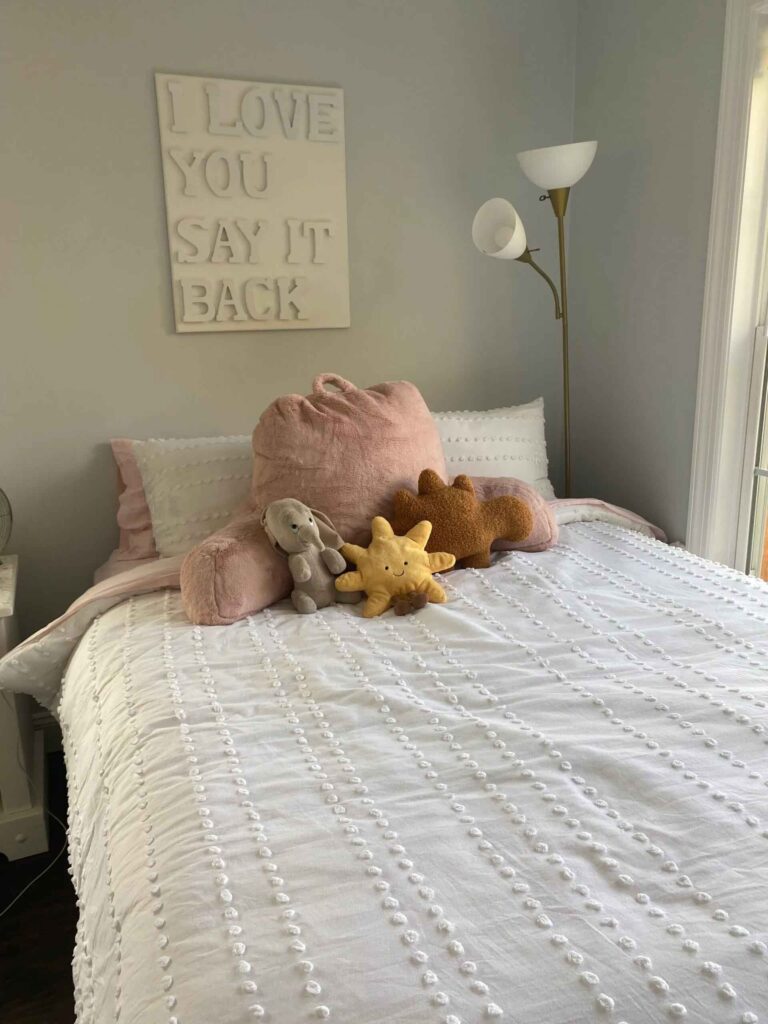
Yes, sleeping with a stuffed animal offers significant emotional and psychological benefits, including reducing anxiety, enhancing feelings of safety, and improving overall mental health.
Sleeping with stuffed animals provides psychological benefits like anxiety reduction, emotional support, and improved sleep quality.
Exploring the Psychological Benefits
- Attachment Theory and Comfort Objects: Psychological studies suggest that comfort objects like stuffed animals can mimic the soothing effects of caregiver presence, especially in stressful or unfamiliar situations.
- Reducing Cortisol Levels: Research shows physical touch, even with inanimate objects, can lower cortisol (stress hormone) levels, which improves mood and lowers anxiety.
- Improved Sleep Quality: People who sleep with stuffed animals often report better sleep due to reduced feelings of loneliness and anxiety before bedtime.
- Therapeutic Use in Adults: Therapists sometimes encourage adults to use plush toys to manage PTSD, depression, or anxiety disorders, highlighting their clinical value beyond childhood.
- Example: A 2018 study published in Journal of Behavioral Medicine found that adults who hugged stuffed animals experienced measurable reductions in blood pressure and heart rate.
| Psychological Benefit | Description | Example / Research Finding |
|---|---|---|
| Attachment Theory and Comfort Objects | Comfort objects like stuffed animals mimic caregiver presence, soothing stress or unfamiliarity. | Provides emotional security in stressful situations. |
| Reducing Cortisol Levels | Physical touch with stuffed animals lowers cortisol (stress hormone), improving mood and reducing anxiety. | Lowers anxiety by regulating stress hormones. |
| Improved Sleep Quality | Using stuffed animals reduces loneliness and anxiety before bedtime, promoting better sleep. | Users report falling asleep more easily and sleeping more soundly. |
| Therapeutic Use in Adults | Therapists recommend plush toys to manage PTSD, depression, and anxiety disorders in adults. | Highlights clinical value of stuffed animals beyond childhood. |
| Research Evidence | 2018 Journal of Behavioral Medicine study showed adults hugging stuffed animals had lower blood pressure and heart rate. | Demonstrates measurable physiological benefits of hugging plush toys. |
3. Which age groups are most likely to sleep with stuffed animals, and why?
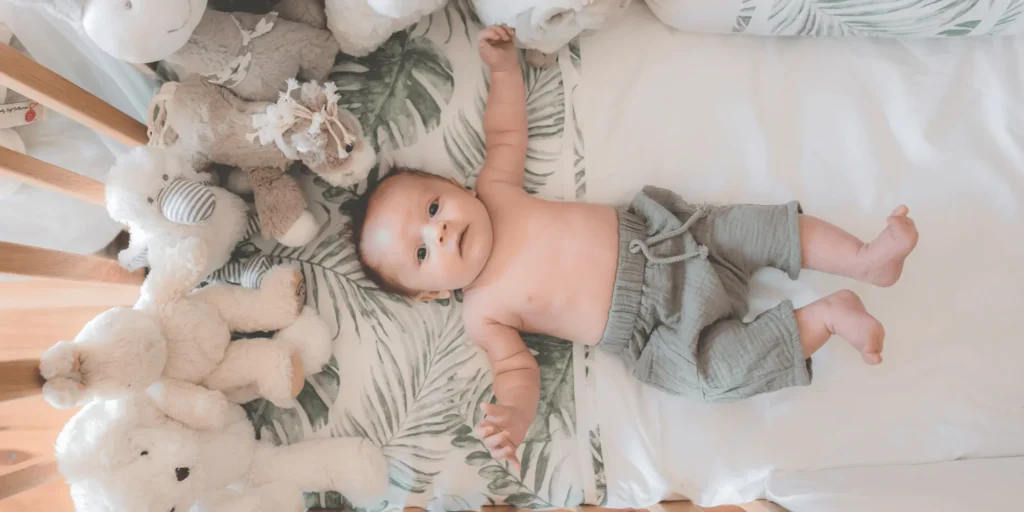
While children are the most obvious group to sleep with stuffed animals, many teenagers and adults also maintain this habit due to emotional, psychological, and cultural reasons.
Children, teenagers, and adults all sleep with stuffed animals, driven by emotional needs, comfort, and stress relief.
Age Group Breakdown and Motivations
| Age Group | Percentage Sleeping with Stuffed Animals* | Primary Reasons |
|---|---|---|
| Children (0-12) | 85% | Security, sleep routine, attachment |
| Teenagers (13-19) | 30% | Stress relief, nostalgia, personal comfort |
| Adults (20+) | 20-25% | Emotional support, anxiety reduction |
- Data from multiple surveys in the US and Europe
- Children: Often use stuffed animals as transitional objects to ease separation anxiety and establish bedtime routines.
- Teenagers: Continue due to emotional attachment or as a means of managing growing social and academic pressures.
- Adults: May keep plush toys for sentimental reasons, stress relief, or even as a form of self-care and emotional grounding.
- Example: Some adults collect limited-edition plush toys tied to fandoms or hobbies, integrating these toys into their daily lives beyond childhood.
4. Do adults face any social stigma for sleeping with stuffed animals?
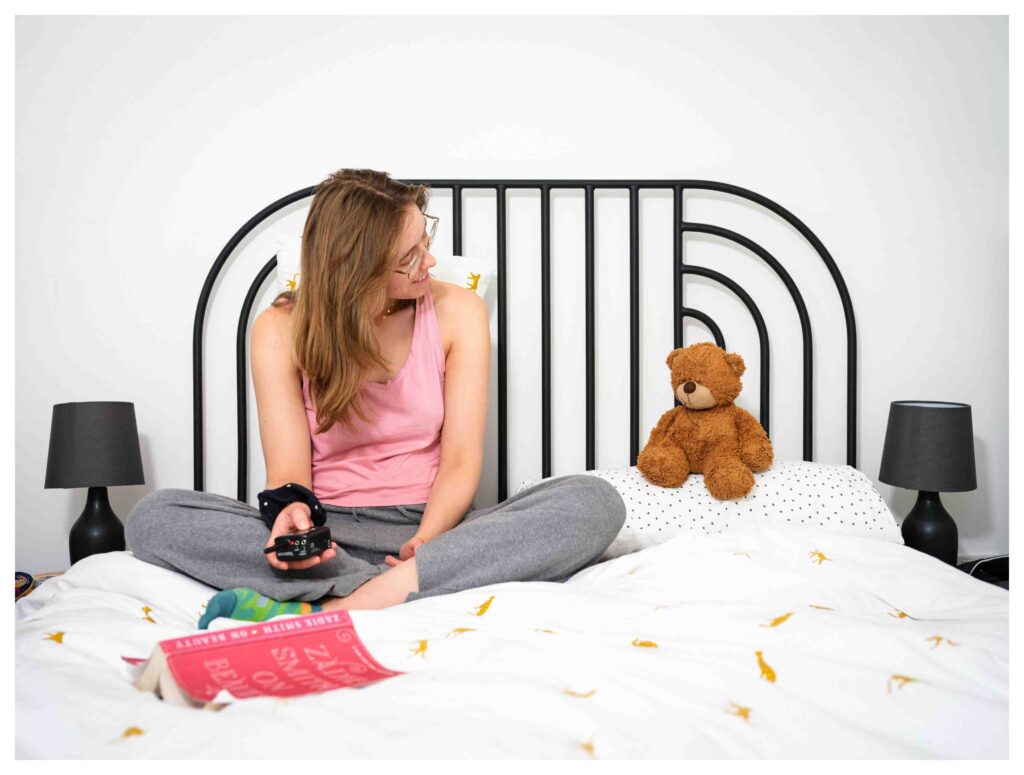
Yes, many adults experience social stigma or feel embarrassed about sleeping with stuffed animals due to societal expectations about maturity and “childish” behavior.
Adults often face social stigma for sleeping with stuffed animals, though attitudes are gradually shifting toward acceptance.
Social Stigma and Changing Perspectives
- Cultural Norms and Gender Expectations: Society often views stuffed animals as “childish,” especially for men, leading to embarrassment or secrecy about the habit.
- Social Media and Changing Trends: Platforms like TikTok and Instagram have helped normalize adults showing their emotional sides, including sleeping with plush toys.
- Psychological Impact of Stigma: Fear of judgment may cause some adults to hide their plush companions, increasing feelings of shame or isolation.
- Breaking the Mold: Increasing public conversations about mental health encourage acceptance of behaviors that promote emotional well-being, including using comfort objects.
- Example: Celebrities and influencers openly discussing their attachment to stuffed animals help reduce stigma and encourage openness.
| Aspect | Description | Example / Insight |
|---|---|---|
| Cultural Norms and Gender Expectations | Society views stuffed animals as “childish,” especially for men, causing embarrassment or secrecy. | Men may hide the habit due to gender stereotypes. |
| Social Media and Changing Trends | Platforms like TikTok and Instagram normalize adults showing emotional sides, including sleeping with plush toys. | Social media promotes openness and acceptance of comfort objects. |
| Psychological Impact of Stigma | Fear of judgment causes some adults to hide their plush toys, leading to shame or isolation. | Stigma can negatively affect mental health. |
| Breaking the Mold | Public discussions on mental health promote acceptance of behaviors that support emotional well-being. | Growing mental health awareness reduces stigma around stuffed animals. |
| Example | Celebrities and influencers openly discuss their attachment to stuffed animals, helping reduce stigma. | Influencer openness encourages others to feel comfortable. |
5. How can sleeping with a stuffed animal impact mental health and stress levels?
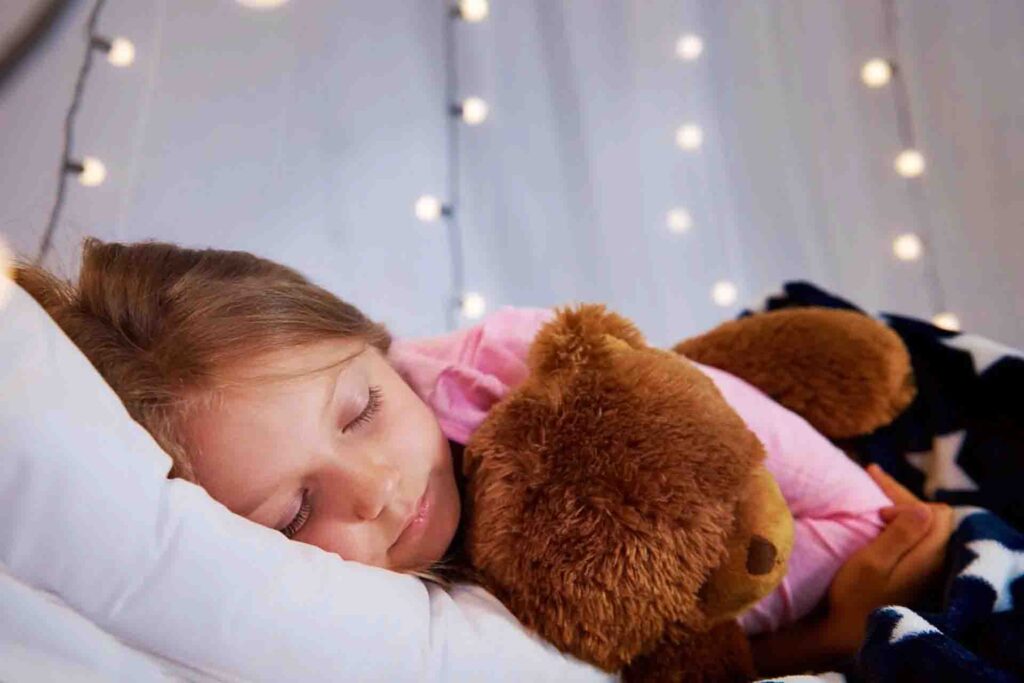
Sleeping with a stuffed animal can positively impact mental health by lowering stress hormones, increasing feelings of safety, and providing emotional support.
Sleeping with stuffed animals reduces stress and supports mental health by fostering emotional security and relaxation.
Mental Health Benefits Explained
- Stress Hormone Regulation: The physical act of holding a soft object releases calming hormones and reduces adrenaline, leading to relaxation.
- Combating Loneliness: Stuffed animals serve as companions, reducing feelings of isolation, especially for people living alone or dealing with grief.
- Routine and Sleep Hygiene: Incorporating a stuffed animal into a bedtime routine can signal the brain to prepare for rest, improving sleep consistency.
- Child and Adult Therapy: Use in therapeutic settings shows promise for reducing symptoms of anxiety and depression.
- Example: Mental health professionals recommend “comfort objects” like plush toys as tools to help clients build resilience and emotional regulation.
| Mental Health Aspect | Description | Example / Insight |
|---|---|---|
| Stress Hormone Regulation | Holding a soft object releases calming hormones and reduces adrenaline, promoting relaxation. | Helps lower stress levels physically and mentally. |
| Combating Loneliness | Stuffed animals act as companions, reducing isolation, especially for those living alone or grieving. | Provides emotional support and a sense of connection. |
| Routine and Sleep Hygiene | Using a stuffed animal in bedtime routine signals the brain to prepare for sleep, improving consistency. | Enhances sleep quality through familiar comfort cues. |
| Child and Adult Therapy | Plush toys in therapy help reduce anxiety and depression symptoms in both children and adults. | Therapeutic tool for emotional regulation and resilience building. |
| Professional Recommendation | Mental health experts advise comfort objects like plush toys to aid emotional well-being. | Widely used to support clients’ mental health and coping skills. |
6. Are there cultural differences in attitudes toward sleeping with stuffed animals?
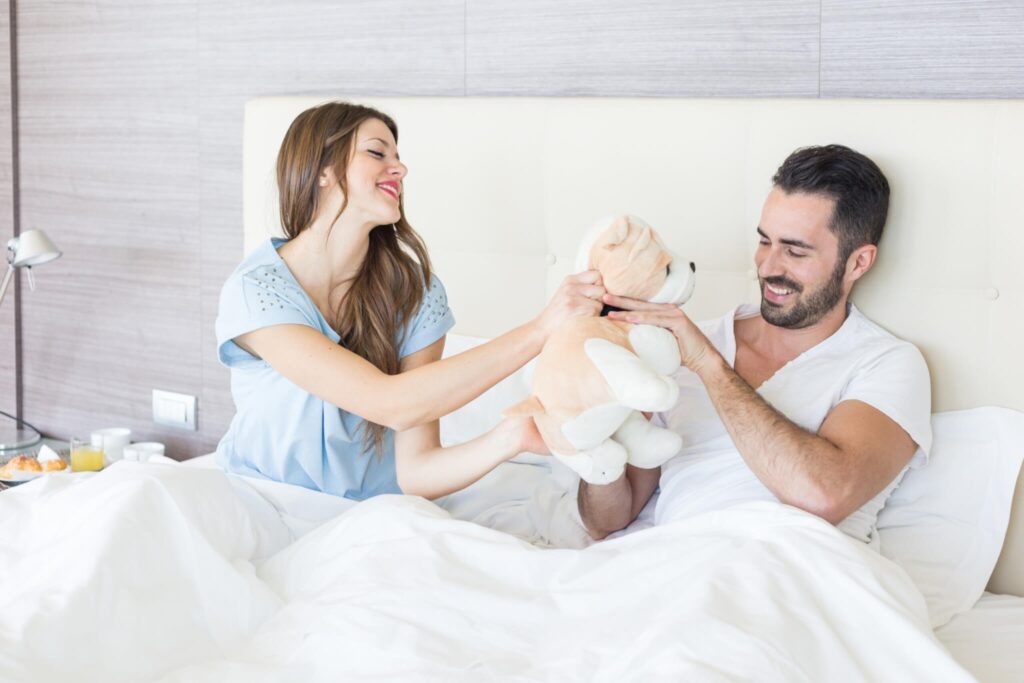
Yes, attitudes toward sleeping with stuffed animals vary globally, influenced by cultural norms, parenting styles, and social acceptance.
Cultural views on sleeping with stuffed animals differ worldwide, affecting acceptance and prevalence across regions.
Cross-Cultural Perspectives
- Western Cultures: Often associate stuffed animals with childhood but growing acceptance exists for adult use due to mental health awareness.
- East Asian Cultures: High prevalence of plush toy use among adults, tied to kawaii (cute) culture and emotional expression.
- Middle Eastern and African Cultures: Less publicly discussed, but comfort objects exist in various traditional forms.
- Cultural Taboo and Gender Roles: Some societies impose stricter gender norms impacting acceptance.
- Example: In Japan and South Korea, plush toys are mainstream for all ages, often seen as fashion accessories or stress relievers.
| Cultural Region | Attitudes Toward Sleeping with Stuffed Animals | Example / Insight |
|---|---|---|
| Western Cultures | Often linked to childhood; growing adult acceptance due to increased mental health awareness. | Adults using plush toys for comfort is becoming more normalized. |
| East Asian Cultures | High use among adults connected to kawaii (cute) culture and emotional expression. | Japan and South Korea embrace plush toys as fashion and comfort. |
| Middle Eastern & African Cultures | Less public discussion; comfort objects exist in traditional forms. | Cultural expressions of comfort objects vary widely. |
| Cultural Taboo and Gender Roles | Some societies enforce strict gender norms that affect acceptance of plush toys for adults. | Gender expectations may limit public acceptance. |
| Example | Japan and South Korea treat plush toys as mainstream for all ages, seen as stress relievers and accessories. | Plush toys are integrated into everyday life and fashion. |
Final Thoughts & Product Inquiry
Sleeping with a stuffed animal is far from childish; it’s a universal source of comfort, emotional healing, and joy for millions worldwide. Whether for a child’s security, a teenager’s stress relief, or an adult’s emotional support, plush toys play an essential role in mental well-being.
At Kinwin Plush Toy Factory, we understand these deep emotional connections. With our advanced production technology, strict quality control, and eco-friendly materials, we craft high-quality, durable, and beautiful plush toys designed to meet the personalized needs of all ages — from trendy kawaii designs to classic comforting companions.
If you want to offer your customers plush toys that combine exceptional comfort and style, contact Kinwin today for customized solutions tailored to your brand and market needs. Let’s create plush toys that bring warmth and smiles to every bedtime.




